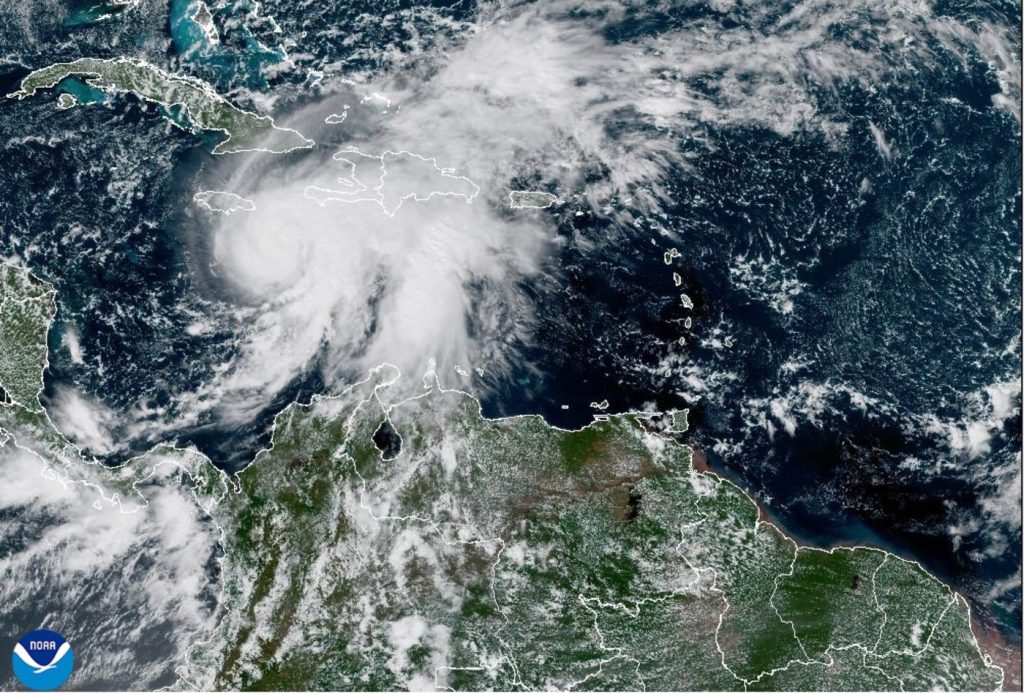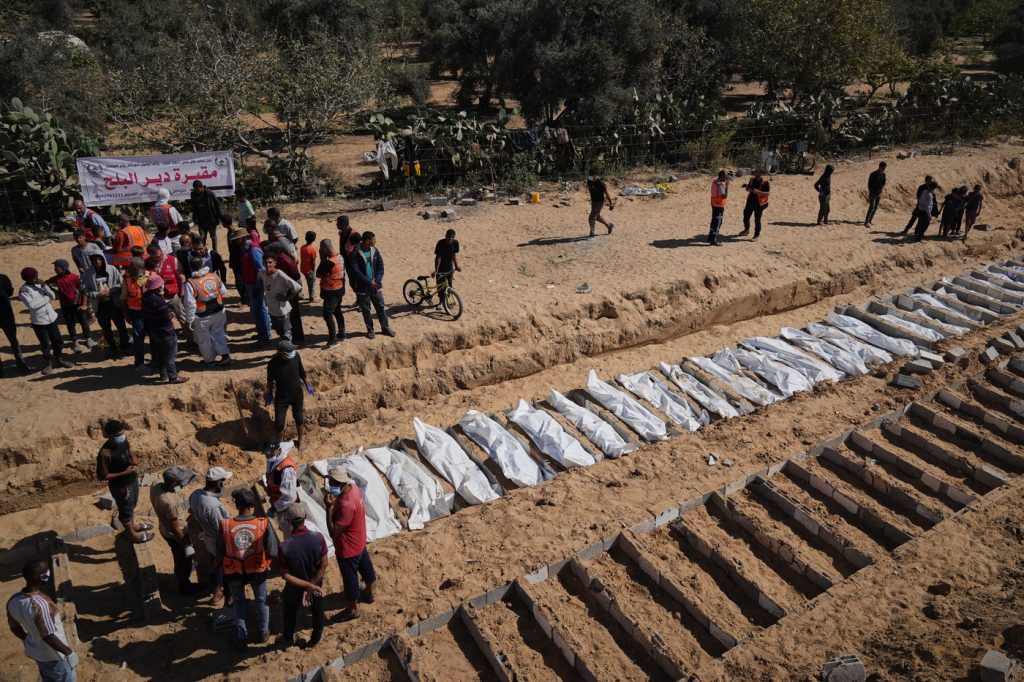Hurricane Melissa has intensified into a Category 5 storm as of Monday, approaching Jamaica, where it is predicted to cause catastrophic flooding, landslides, and devastating damage. This marks the strongest hurricane on record to threaten the island since records began in 1851.
The storm has already been linked to six fatalities in the northern Caribbean as it moves toward Jamaica, with landfall expected on Tuesday. Following Jamaica, the hurricane is anticipated to impact Cuba later in the day and subsequently move toward the Bahamas, though it is not projected to affect the United States.
In preparation for the impending disaster, Jamaican Prime Minister Andrew Holness expressed his concerns, stating, “I have been on my knees in prayer.” Residents have been taking precautions; for instance, Hanna Mcleod, a 23-year-old hotel receptionist in Kingston, has boarded up windows, stocked up on canned goods, and prepared candles and flashlights throughout her home, expressing worry as she braces for one of the strongest hurricanes she has ever faced.
Melissa has maximum sustained winds of 175 mph (280 kph) and is moving west-northwest at 3 mph (5 kph). Jonathan Porter, chief meteorologist at AccuWeather, noted that if the storm maintains its current strength, it would set a record for the most powerful hurricane to hit Jamaica. A storm surge of up to 13 feet (4 meters) is expected along coastal Kingston, impacting critical infrastructures such as the main international airport and power plants.
Preparations and Evacuations in Jamaica
As the situation unfolds, mandatory evacuations have been ordered in flood-prone areas of Jamaica, with buses transporting residents to safer locations. However, some individuals, like 64-year-old Noel Francis, have chosen to stay, believing they can manage on their own. “I hear what they say, but I am not leaving,” he stated, along with his neighbor Bruce Dawkins, who echoed similar sentiments while preparing to weather the storm.
Reports have already surfaced of power outages in several towns along Jamaica's southern coast as winds intensify. Hyacinth White, a resident living near the sea, has also opted to remain at home, citing concerns about flooding but no desire to evacuate.
In the Black River community in western Jamaica, where the most significant storm surge is anticipated, street vendor Sandra Walker has been working despite the impending hurricane. Having previously faced a “terrible” experience in a shelter during Hurricane Ivan, she chooses to stay put, illustrating the reluctance of some residents to evacuate despite the dangers.
Storm's Impact in Neighboring Countries
As Hurricane Melissa progresses, it has already caused fatalities in Haiti and the Dominican Republic and has damaged over 750 homes in the Dominican Republic, displacing more than 3,760 people. Floodwaters have disrupted access to numerous communities, exacerbating existing crises, particularly in Haiti where flooding is obstructing farmland access amidst ongoing hunger issues impacting over 5.7 million people.
Predictively, more than 600,000 people are being evacuated from eastern Cuba as hurricane warnings are issued. Long lines form as residents prepare for the storm's approach. Cuban officials are bracing for up to 20 inches (51 centimeters) of rainfall accompanied by significant storm surges along the coast.
In the broader context, Hurricane Melissa is the 13th named storm of the Atlantic hurricane season, officially recognized from June 1 to November 30, with predictions of above-normal activity this season by the U.S. National Oceanic and Atmospheric Administration.
As preparations continue, officials and experts underscore the urgent need for readiness and response in the face of what is likely to be one of the most devastating storms to impact the region in over a century.












